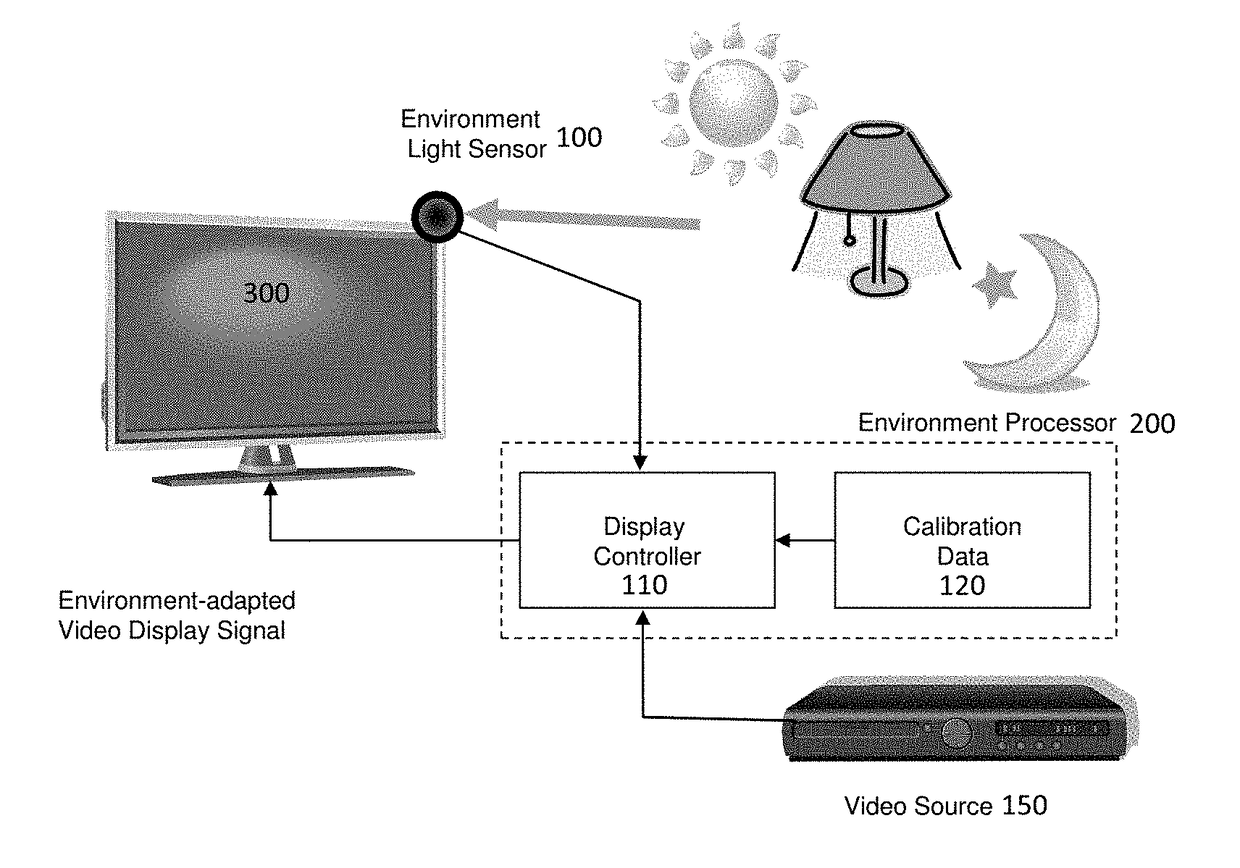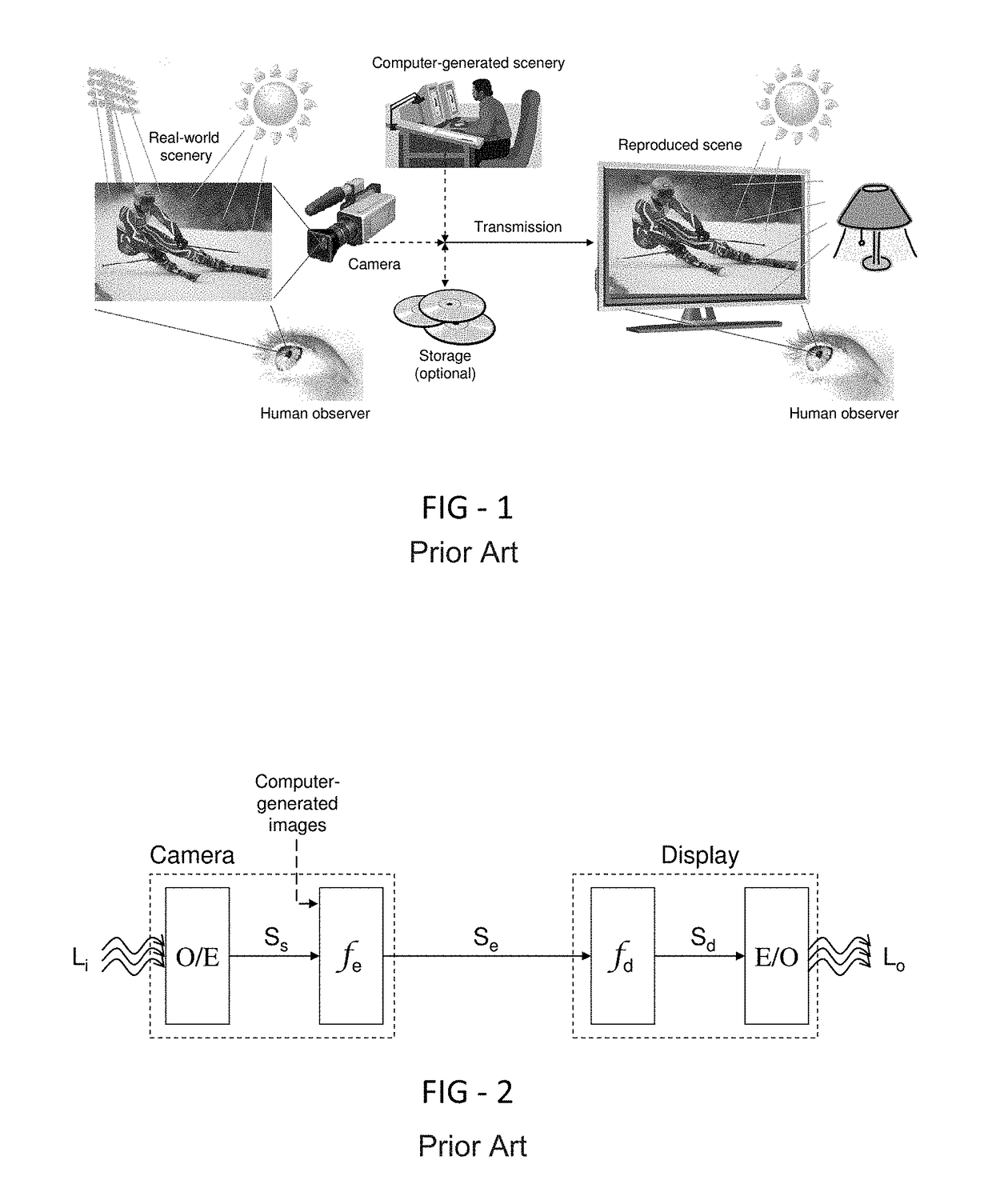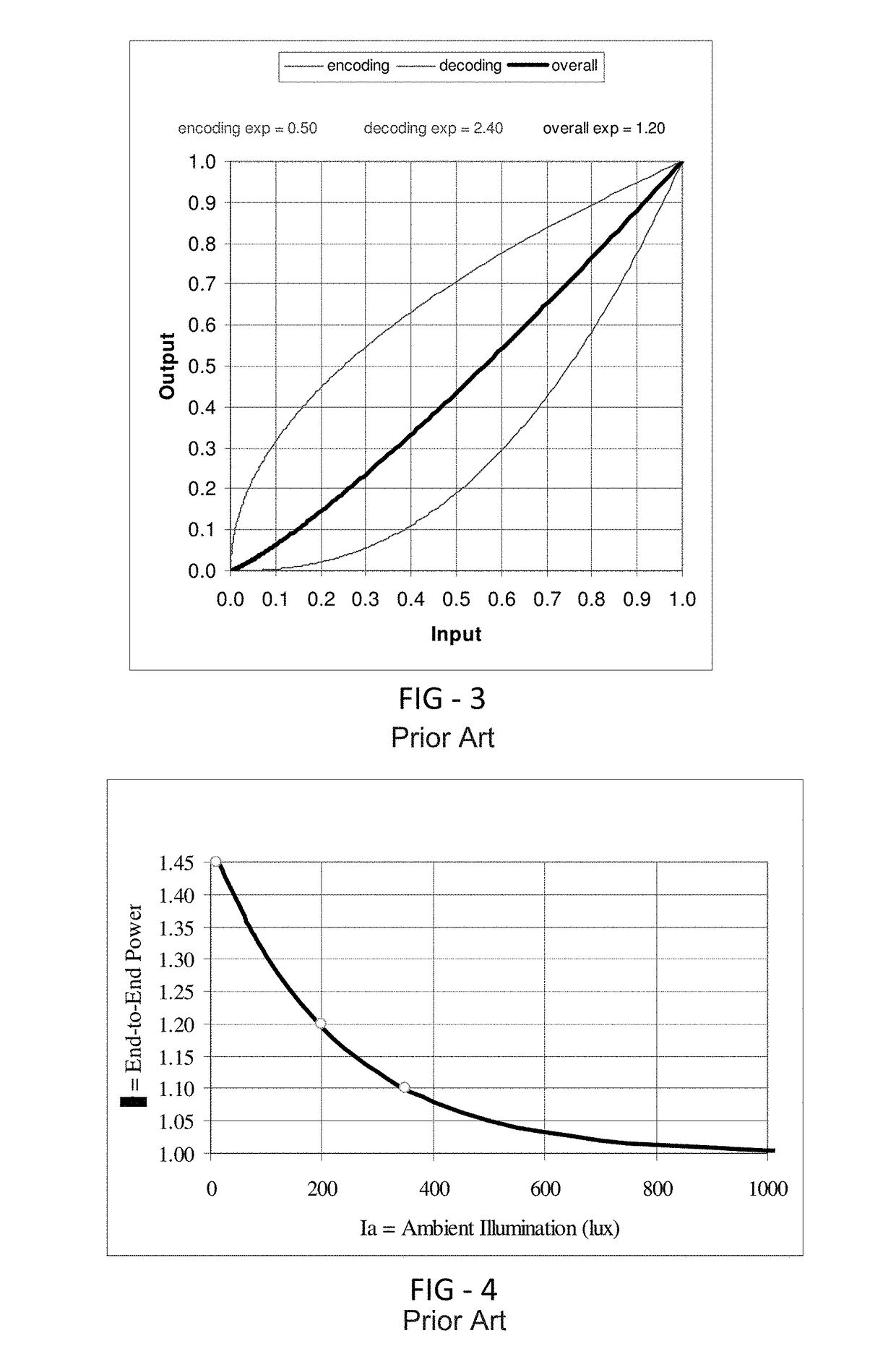System and method for environmental adaptation of display characteristics
a display characteristic and environmental adaptation technology, applied in the field of display, can solve the problems of difficulty in a display to match the dynamic range of luminance that exists in the real world, and inability to achieve true three-dimensional depth reproduction
- Summary
- Abstract
- Description
- Claims
- Application Information
AI Technical Summary
Benefits of technology
Problems solved by technology
Method used
Image
Examples
exemplary embodiment 1
[0080
[0081]Referring to FIG. 11 the encoded image signal Se and environmentally-reactive control signal Sa are fed into the image signal processing block labeled ƒp which, in an exemplary embodiment, produces a pre-decoding image signal Sp according to Eq(5) below. This equation assumes that the all three image signal transformations (encoding, pre-decoder processing, and decoding) are performed with power law functions, although this is not a necessity for the invention. Eq(5) represents the processing functionality of block ƒp, accepting the input signals Sa and Se and outputting the signal Sp. A new feature of this embodiment is the introduction of a gray level threshold labeled St, leading to the two conditional cases expressed in Eq(5). The 1st condition is applicable when encoded signal levels fall below a level that is derived from St, in which case those signal levels will be set to 0 (i.e., full black). Otherwise, the 2nd condition in Eq(5) is applicable for encoded signal ...
exemplary embodiment 2
[0091
[0092]The “cliff” type of threshold cutoff produced by Eq(5) and illustrated in FIG. 13 may produce objectionable visual artifacts in the image, especially for higher levels of thresholds and / or black level offsets. This would manifest as darker regions in an image that suddenly and unnaturally become black—this a phenomena that is sometimes referred to as banding. This effect can be reduced by softening the edge of the threshold.
[0093]Referring back to FIG. 11 the encoded image signal Se and environmentally-reactive control signal Sa are fed into the image signal processing block labeled ƒp which, in an exemplary embodiment, produces a pre-decoding image signal Sp according to Eq(6) below. This equation assumes that the all three image signal transformations (encoding, pre-decoder processing, and decoding) are performed with power law functions, although this is not a necessity for the invention. Eq(6) represents the processing functionality of block ƒp, accepting the input si...
exemplary embodiment 3
[0104
[0105]The linear ramp provided as a transition between full off and threshold in the previous embodiment affords a significant reduction in visual artifacts, or banding, but there is still a sharp point in the end-to-end transform curve shown in FIG. 14 that has the potential to produce visual artifacts. To further improve the transition, a specific example using a sine curve will be described below, although other functions could be used.
[0106]Referring back to FIG. 11 the encoded image signal Se and environmentally-reactive control signal Sa are fed into the image signal processing block labeled ƒp which, in an exemplary embodiment, produces a pre-decoding image signal Sp according to Eq(7) below. This equation assumes that the all three image signal transformations (encoding, pre-decoder processing, and decoding) are performed with power law functions, although this is not a necessity for the invention. Eq(7) represents the processing functionality of block ƒp, accepting the...
PUM
 Login to View More
Login to View More Abstract
Description
Claims
Application Information
 Login to View More
Login to View More - R&D
- Intellectual Property
- Life Sciences
- Materials
- Tech Scout
- Unparalleled Data Quality
- Higher Quality Content
- 60% Fewer Hallucinations
Browse by: Latest US Patents, China's latest patents, Technical Efficacy Thesaurus, Application Domain, Technology Topic, Popular Technical Reports.
© 2025 PatSnap. All rights reserved.Legal|Privacy policy|Modern Slavery Act Transparency Statement|Sitemap|About US| Contact US: help@patsnap.com



